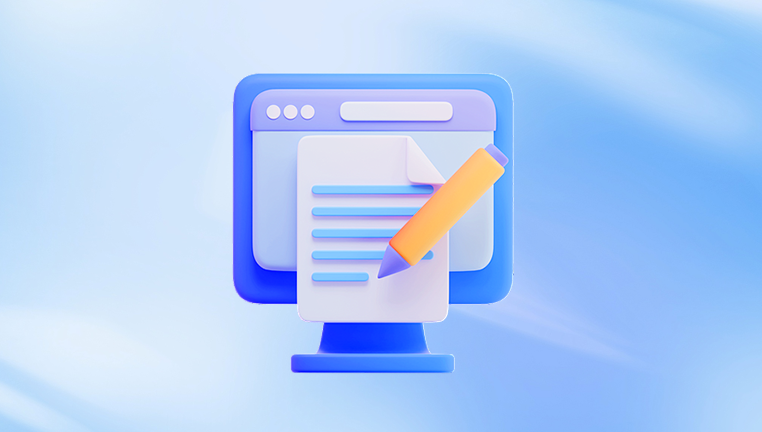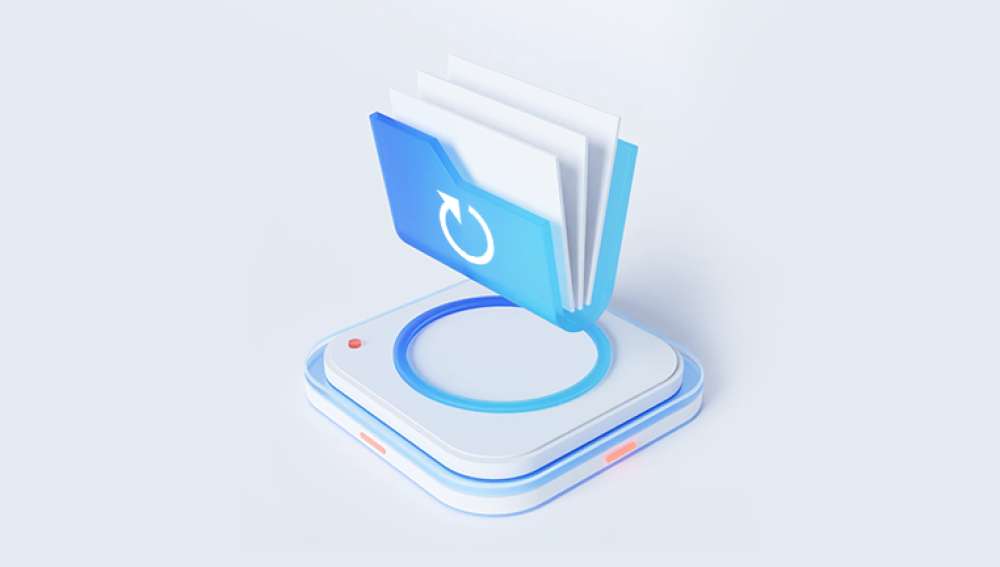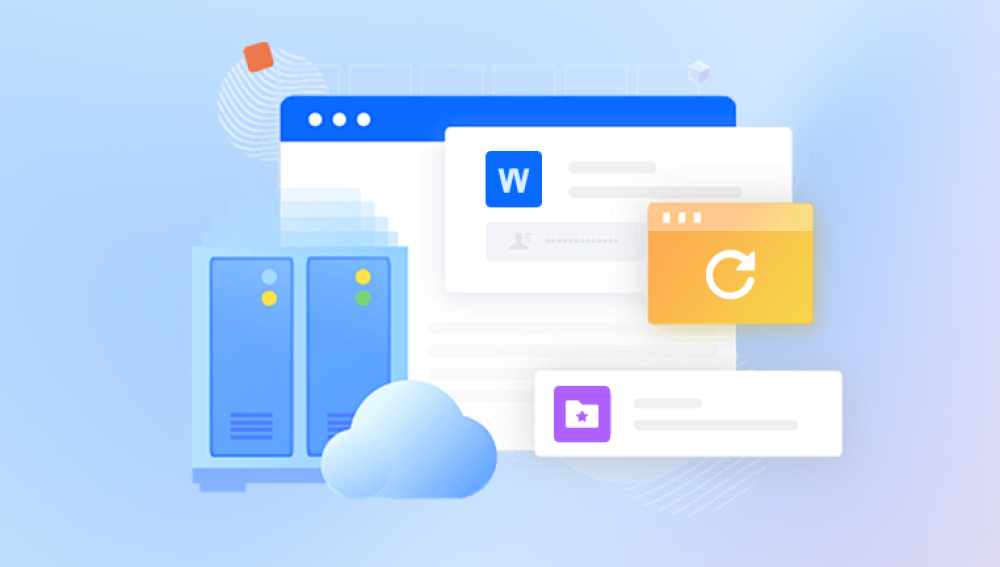Accidentally overwriting an important file can feel like a gut punch. One moment, your crucial project or irreplaceable document is safe and sound; the next, it's replaced by something else and worse, there are no previous versions to fall back on. It’s a common and often devastating issue, especially for those who rely heavily on digital data. But is all hope lost when there's no clear backup or previous version available?
Overwritten Files: What Happens in the Background?
To recover overwritten files, it’s important to understand what happens during the overwriting process. When a file is overwritten, the operating system replaces the data previously stored in a given location with new data. This can occur when:

A file with the same name is saved in the same location.
A copy-paste operation replaces an existing file.
An automatic save or sync overwrites an earlier version.
Key concept: In most file systems, when files are deleted, they’re not immediately erased—they’re marked as available space. However, overwriting actively replaces the data at the storage block level. This makes recovery difficult, but not necessarily impossible, especially if the overwriting is partial or if fragments remain.
Scenarios Where Recovery Is Still Possible
Before diving into recovery methods, let’s clarify when recovering overwritten files without previous versions is feasible:
The overwritten file was cached or indexed.
Temporary files or autosave versions exist.
The overwriting was incomplete.
You’re using a file system that journals changes.
The new file was saved but didn’t overwrite all blocks.
Third-party backup or sync software was running.
The original file was synced to a cloud storage provider.
With that in mind, let’s look at your options.
Method 1: Check Temporary and Autosave Locations
Applications like Microsoft Word, Excel, Adobe Photoshop, and others often create temporary or autosave files during editing. Even if the file has been overwritten, these versions might still exist.
For Microsoft Office:
Open the application (e.g., Word or Excel).
Go to File > Info > Manage Document (Word) or Manage Workbook (Excel).
Select Recover Unsaved Documents.
Look through the list for a version that resembles your original file.
These autosaved versions are typically stored in:
mathematica
CopyEdit
C:\Users\[YourUsername]\AppData\Local\Microsoft\Office\UnsavedFiles
For Adobe Photoshop:
Check for files in:
mathematica
CopyEdit
C:\Users\[YourUsername]\AppData\Roaming\Adobe\Adobe Photoshop [Version]\AutoRecover
For macOS:
Mac apps like Pages or Numbers may store autosaves in:
swift
CopyEdit
~/Library/Containers/com.apple.iWork.Pages/Data/Library/Autosave Information
Tip:
Always check your app settings for “AutoRecover” or “Autosave” features. These folders may contain what you thought was lost.
Method 2: Use File Recovery Software
Drecov Data Recovery
Using Drecov Data Recovery is simple: just launch the program, select the location where the file was stored, and let the software perform a deep scan. The intuitive interface displays recoverable files, allowing you to preview them before recovery. It supports all major file systems (NTFS, FAT32. exFAT, and more) and works seamlessly on both internal and external drives.
What sets Panda apart is its intelligent recovery engine, built to handle even complex cases like overwritten files, formatted drives, or corrupted partitions. While full recovery isn’t always guaranteed due to how overwriting works at the disk level, Panda maximizes your chances with every scan.
Method 3: Search the Shadow Copies (Windows)
Although you mentioned there are no previous versions, Windows sometimes keeps shadow copies through System Protection. These are snapshots of system files and data.
Check for Shadow Copies:
Open Command Prompt as Administrator.
Type:
vbnet
CopyEdit
vssadmin list shadows
If shadows exist, use tools like ShadowExplorer to access them.
Use ShadowExplorer:
Install and open ShadowExplorer.
Select the drive and snapshot date.
Browse for the overwritten file.
Right-click > Export to restore.
Even if “Previous Versions” doesn’t show anything in File Explorer, ShadowExplorer might still detect hidden snapshots.
Method 4: Recover from Cloud Sync Services
If your files were synced to cloud storage, there’s a good chance they can be recovered—even after being overwritten locally.
For OneDrive:
Go to the OneDrive website.
Locate the overwritten file.
Right-click > Version History.
Restore an earlier version.
For Dropbox:
Login to Dropbox.com.
Click the file > Version history.
Restore a prior version—even deleted ones.
For Google Drive:
Right-click the file.
Select Manage Versions.
Restore or download older versions.
Cloud services maintain a versioning history for a period of time (typically 30 days to several months), even if local copies are overwritten.
Method 5: Look for Backups in Unexpected Places
There might be unintentional or forgotten backups:
Email attachments: Did you email the file to someone?
External drives or USBs: Maybe you saved a copy earlier.
Auto-sync folders: Applications like Notion, Obsidian, or Evernote may sync a copy.
Collaboration platforms: Slack, Teams, or project management tools may have file archives.
Search these with specific keywords, filenames, or approximate dates.
Method 6: Search for File Fragments on Disk
Advanced recovery tools can rebuild partially overwritten files from disk fragments. This method is useful when:
Only part of the file was overwritten.
The new file is smaller or in a different format.
Tools to Try:
Photorec (by CGSecurity): recovers files based on known file headers and structures.
R-Studio: supports RAID recovery and partial sector rebuilding.
X-Ways Forensics (for professionals): enables low-level sector-by-sector recovery.
This is technical and often works best if you’re familiar with hex-level disk structures or working with forensic professionals.
Method 7: Check System Logs and Activity Histories
Your system’s activity history may provide clues about when and how the file was overwritten, helping you identify possible copies or retrace steps.
Windows:
Event Viewer: Can show when file events occurred.
Recent Items: Use the “Recent Files” list in applications or:
makefile
CopyEdit
shell:recent
macOS:
Console Logs: Search logs for file operation timestamps.
Time Machine (if active): Even if you didn’t enable full backup, snapshots may exist.
While these don’t restore files directly, they help you trace potential recovery options or backups.
What to Do When You Can’t Recover the File
If every method fails:
Try reconstructing the file from memory or other sources.
Contact a data recovery specialist. They can perform forensic-grade recovery.
Document the incident. It may prevent similar data loss in the future.
In some cases, professional services can cost hundreds to thousands of dollars but may be worthwhile for critical data.
How to Prevent Future Overwrites
Once burned, twice wise. After recovering (or failing to recover) an overwritten file, it’s vital to implement safeguards.
1. Enable Version History in Apps
Many programs (MS Office, Google Docs, etc.) have built-in versioning. Turn this on.
2. Use File Backup Software
Examples:
Acronis True Image
Macrium Reflect
Carbon Copy Cloner (macOS)
Time Machine (macOS)
3. Activate System Restore or File History (Windows)
Go to Control Panel > File History and turn it on.
Set restore points regularly.
4. Store Files in the Cloud
Cloud platforms offer file version history and easy recovery. Use services like:
Google Drive
Dropbox
OneDrive
iCloud
5. Use Smart File Naming
Adopt naming conventions that include versions or dates. Example:
CopyEdit
Project_Proposal_v1.docx Project_Proposal_v2.docx
This prevents overwriting files with the same name.
6. Enable Autosave Features
Modern office tools support autosave to the cloud. Turn it on in Microsoft 365 or Google Workspace.
7. Educate Team Members
If you're in a collaborative environment, ensure everyone understands safe file handling and backup practices.




